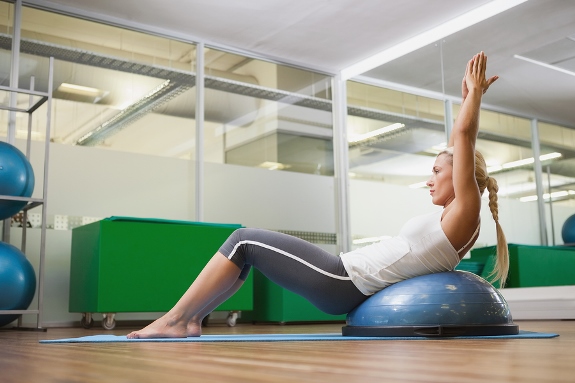
You metabolism is like a woodstove. When you put a log on the fire, the fire gets hotter and produces more heat. Once that log is consumed, the fire dies down to just coals until you add another log. Overall when you exercise, your metabolism works harder to provide more energy to your muscles. But the type of exercise you do makes a difference as to how hard your metabolism works.
Before we get into the specific as far as the types of exercise that makes your metabolism work the hardest, lets first talk about the three types of calorie-burning processes:
1) Resting Metabolic Rate (RMR): This is the rate your metabolism works while sitting, sleeping, standing, etc. It accounts for about 75% of the time your metabolism is working and for the most part is a fairly constant rate until you eat or exercise.
2) Thermal Effect of Food (TEF): Once you have something to eat, your metabolism kicks into TEF mode to digest and process the food just consumed. This accounts for about 10% of the time during your day. Eating six small meals per day, keeps the TEF going at a steadier rate than does three meals per day, which causes a more cyclic up-and-down rate; because you always have some food in your stomach, your metabolism stays in TEF longer.
3) Physical Activity Energy Expenditure (PAEE): Once you start exercising, you are burning more energy than with the other two methods, so your body has to work harder to keep up with the increased energy requirement. Washing dishes, walking up stairs, doing laundry, etc. all qualify as exercise, as does a workout, and thus will kick your metabolism into PAEE mode.
What Type of Exercise Will Make A Difference?
While exercising in general does affect the PAEE of your metabolism, different types of exercise affect it more than others. For instance, it is easy to accept you burn more calories running for 20 minutes than you do walking for the same amount of time. Both use the same large lower muscle groups, but at different rates.
However there is a big difference in your PAEE between cardio and strength training. There is even a difference between the types of cardio. Low intensity and endurance training focuses more on burning fat instead of glucose stored in the muscles.
But high intensity interval training (HIIT) and weight lifting, the focus is on burning glucose stored in the muscles. That glucose has to get replaced so your PAEE stays up higher and longer even after finishing your workout. And of course, the more muscle you build, the more calories you burn, even at the RMR rate.
